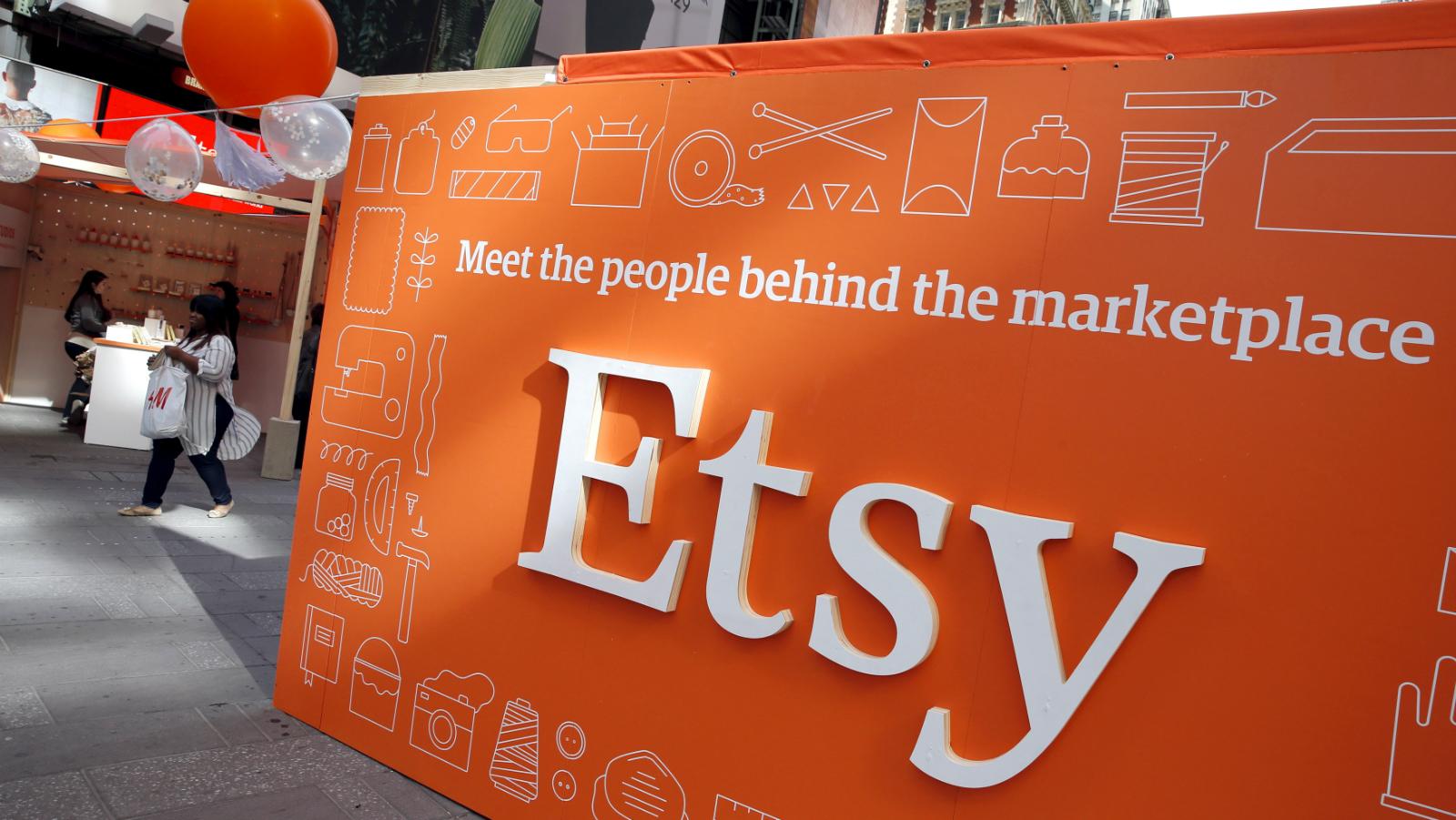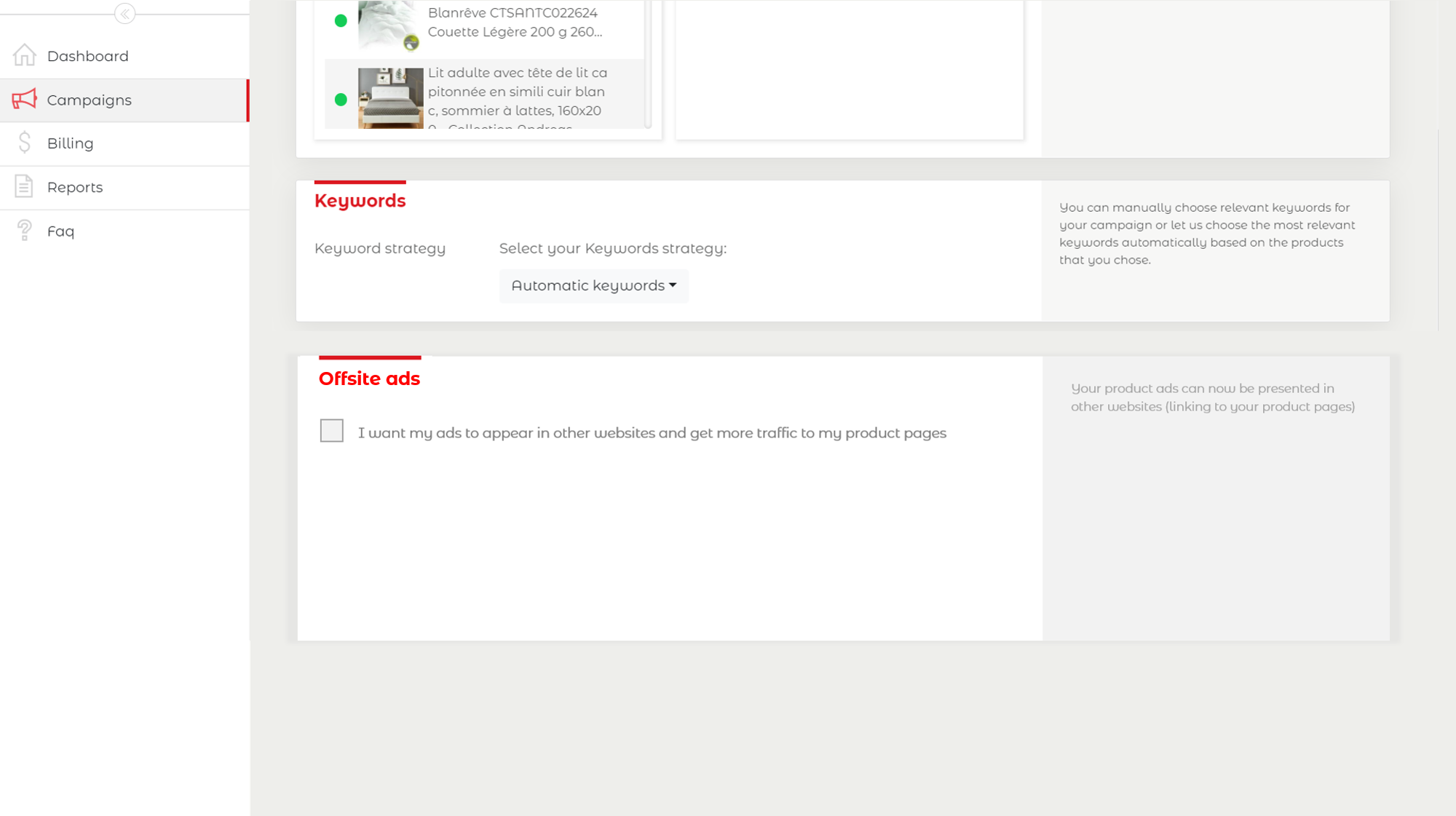The story of Etsy’s “risk free” Promoted Listing Ads

For several quarters Etsy’s growth engine was it’s Promoted Listing Ads.
“2018 revenue growth was driven primarily by GMS growth, changes to our pricing model and growth in Promoted Listings.
Promoted Listings first, in terms of supply and demand, sellers give us more funds than we are currently able to spend by a fairly meaningful amount. So it’s about having the right inventory on the site, which is for right number of visits and how much real estate per visit.”
This is what they said during Q4 2018 earnings call.
So what do you do when you cant utilize all the budget that is thrown at you?
There are 3 main options: (1) Show more ads, (2) Increase the price of the ads and (3) Spend some of the budget in other websites and generate traffic to the Promoted Product pages.
Etsy chose option 3.
They turned Esty’s Promoted Listings into Etsy Ads where some of the campaign budget went to Google.
Of course Etsy preferred to keep the budget and use it for internal ads so they don’t have to share it with Google but this option is still better than not utilizing that extra budget at all. Also by using this budget on Google, Etsy got the sellers to participate in it’s marketing efforts and pay for traffic that Etsy and the sellers enjoyed.
Change Etsy Ads back to how they were
The sellers didn’t like that.
Hundreds signed a petition asking to “Change Etsy Ads back to how they were. Where is our CPC and Promoted Listings Ad Options?”
“Your recent implementation of Etsy Ads has been far from good. You eliminated a seller’s option to change their (CPC) Cost Per Click. You removed the ability to only advertise Promoted Listings or Google Shopping Ads. There is minimal transparency of where our budget is going for our campaign. We are forced to advertise to Google Shopping, which is EXTREMELY expensive. And going over our ad budget isn’t good either.”
The performance of Promoted Listings in most cases is way better and effective in terms of ROAS than that of Google ads (there are many reasons why). It is also more transparent and measurable.
Forcing the sellers to advertise outside of Etsy wasn’t received nicely.
Some sellers declared strike on Etsy.
Not happy with recent changes to Promoted Listings and Stats? Stop advertising and let Etsy know from r/Etsy
Not(e) taken
Yesterday Etsy released it’s annual report for 2019 and from what they said during the earning call it appeared as if they have listened to their sellers.
“We listened and learned a lot. While sellers viewed the advertising interfaces visually appealing and simple to use, many sellers perceive off-site advertising is risky. They’re uncomfortable spending money upfront to buy traffic from off-site ads when they’re less confident of a buyer’s purchase intent. As a result, we could see that it was going to take longer than anticipated to scale the program. So in order to address this concern, we rapidly iterated to develop an innovative solution, which we believe will deliver strong value to sellers while mitigating their risk.
As announced to our seller community earlier today, we’re introducing 2 updates to our advertising products. First, we’re introducing an expanded advertising service off-Etsy called Offsite Ads. Etsy will pay the upfront costs to promote sellers’ listings on sites, including Google, Facebook, Instagram, Pinterest and Bing. We’ll leverage our performance marketing budget and expertise to drive traffic to sellers’ shops. When a shopper clicks on an online ad featuring a seller’s listing and purchases from their shop, the seller will pay an advertising fee on that order only when they make a sale. For sellers, this means that they will be getting a really competitive roll-offs of 6 to 8x, utilizing the benefits of our marketing budget and expertise promoting their listings off-site without the risk that it might not lead to a sale for them. For Etsy, this means that we can rapidly scale our off-site advertising program without any budget limitations, a win-win solution.
Second, our on-site advertising program that you all know as Promoted Listings will now be called Etsy Ads. An optional advertising product, sellers can use to bring Etsy traffic to their shop. We’ll be investing in Etsy Ads in 2020, continuing to add capabilities and functionality. Going forward, sellers’ Etsy Ads budgets will only go towards advertising listings to shoppers on Etsy. We’re excited to be able to accelerate our growth marketing investments, given we can now generate more leverage on our marketing dollars.”
In their blog, Etsy described the new offering as “Risk-Free Advertising Service – We’ll pay to promote your items across the web—you only pay a fee when you get a sale, so there’s no risk of paying for ads that don’t work.”
Etsy Listens to Sellers by Unbundling Ad Programs https://t.co/9J6Q3wedvs Now (most) sellers can advertise exclusively with Etsy Promoted Listings
— EcommerceBytes (@EcommerceBytes) February 26, 2020
Sounds like a plan, right? Wrong.
Turns out that many sellers found this new offering even worse than the old one.
When reading further down the blog post they found this statement:
“For most sellers, Offsite Ads is optional, but it’s a great opportunity to grow your business, so all sellers will be automatically enrolled. You’ll get risk-free advertising run by our experienced team of experts and you’ll only pay a fee when you make a sale, so there’s no upfront costs for you.”
They broke it into 3 irritating parts:
(1) “For most sellers, Offsite Ads is optional”
Sellers who have made more than $10,000 USD in sales on Etsy in a 12-month period will be required to participate for the lifetime of their shop in this program and will get a discounted advertising fee. Instead of 15% Advertising fee they will pay 12%.
Etsy forces these sellers to pay for advertising of site and pay 12% advertising fee even if they are not interested.
Also the way that Etsy uses to present it as if it was a good thing is provoking: “If you’ve made more than $10,000 USD in sales on Etsy in a 12-month period you’ll benefit most from offsite advertising So, you’ll be required to participate”.
In other words – We know what is good for you so we will make you do it
Real nice @Etsy you’re going to force me to pay for google ads now? I don’t need ads to have a successful store (and i get too many orders for me to handle) and you’re going to take admoney from me without being able to opt-out?
— Willow (@WillowCreativ3) February 26, 2020
Separate tweet to show you how Etsy’s obligatory “we get an additional 15% of your sales for 30 days if someone clicks an etsy ad” literally takes sales from people specifically looking for MY shop. Which etsy has done zero work for. pic.twitter.com/HxM93Bd2bP
— Kikidoodle & Purrmaids @eccc (@KikiDoodleTweet) February 26, 2020
So disappointed with the new mandatory Etsy offsite ads. You just KNOW @etsy are going to use it to advertise to people who are already engaged with your brand and loyal customers and CHARGE you for the pleasure. Introduce opt out now please the people are maddddd
— Jane???? (@jane26x) February 26, 2020
(2) “It’s a great opportunity to grow your business, so all sellers will be automatically enrolled“.
All sellers are automatically engaged with this new offsite advertising unless they actively opt out. By doing so they will pay 15% ad fee whenever someone clicks on their offsite ad and buys their products.
I’m so disappointed by @Etsy‘s new ads policies. Automatically enrolling shop owners into paying for ads is a predatory tactic. I’ll be working on building my standalone ecommerce site after C2E2. pic.twitter.com/hpkAV1etkw
— livelygold ✨c2e2 (@livelygold) February 26, 2020
(3) “It’s a great opportunity to grow your business, so all sellers will be automatically enrolled“.
Again the “paternalist” attitude – Trust us – This is good – We don’t want you to miss it – So we signed you up – Thank us later – Oh no, We are not doing this just to take your money or to make you pay for our marketing efforts.
But what if Etsy offsite ads are good for the sellers?
When reading further in the FAQ part of the post it says that “For most sellers, one in 10 sales—about 10%—will come from Offsite Ads. So, let’s say you make $1,000 a year on Etsy and 10% of your sales come from Offsite Ads, that would mean your advertising fees for the year would be just $15 based on a 15% advertising fee. If you sell $10,000 on Etsy each year and 10% of your sales come from Offsite Ads, you could expect to pay about $120 with a 12% advertising fee… Most sellers will pay an advertising fee on fewer than 10% of their sales, so it shouldn’t have a big effect on your bottom line.”
It means that for most sellers the risk is not that high (10% of the sales).
Also in the earning call Esty’s officials said that “So last August, we launched Etsy Ads, a product that combine our on-site promoted listings and off-site Google shopping services. Over the past 6 months, Etsy Ads has delivered positive returns for sellers and solid revenue growth for Etsy. As a result, we saw increased budgets and minimal seller churn throughout Q4.“
So maybe the strikes and petitions regarding the Etsy ads were just some side noise made by a minority of sellers that weren’t getting good results for their campaigns?
Maybe Etsy really helps the sellers get more sales by opting them in to the new advertising offsite plan?
We will keep you posted…
Footnote: Here is another way for doing offsite advertising
Another way for engaging sellers (who want that) with offsite promotion can be just by adding a check box in the campaign creation page.

Ask us about our offsite Sponsored Product Ads!
About Bad:
Mabaya’s Sponsored Product Ads platform is a white label solution for marketplaces and online retailers who want to run their own ecommerce media and enable their sellers and brand partners to promote their products within the store. The company has vast experience in the ecommerce media space, serving billions of Sponsored Product Ads for major ecommerce sites and investing more than 5 years in developing and updating the platform.
If you want to consult your eCommerce media business give us a call or meet us at Shoptalk.


